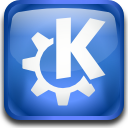 The KDE development community officially announced the much-anticipated release of KDE 4.0 this morning. This new version of the open-source desktop environment represents a daring leap forward for the project and includes many radical deviations from the previous KDE 3.5.x series. Significant changes are present at virtually every level of the KDE desktop stack, from the underlying development architecture to the user interface.
The KDE development community officially announced the much-anticipated release of KDE 4.0 this morning. This new version of the open-source desktop environment represents a daring leap forward for the project and includes many radical deviations from the previous KDE 3.5.x series. Significant changes are present at virtually every level of the KDE desktop stack, from the underlying development architecture to the user interface.
KDE 4.0 introduces the Plasma desktop shell, which replaces the conventional panel and desktop with interactive widgets. KDE 4.0 also brings compositing support and advanced graphical effects to the KWin window manager. An aesthetically sophisticated new theme engine and icon set called Oxygen increases the visual consistency of the environment along with new vector-based artwork.
Beneath the surface, KDE 4.0 includes some significant architectural changes. KDE's DCOP interprocess-communication system has been retired and completely replaced with D-Bus, a standard IPC framework created through the FreeDesktop.org project. KDE's adoption of D-Bus will greatly improve interoperability between KDE and GNOME, another popular open source desktop environment. KDE 4.0 also adds the Phonon cross-platform multimedia library, and the Solid hardware integration framework.
Several new applications have also been added to KDE, including the new Dolphin file manager and a new desktop configuration tool.
Some rough edges remain
KDE 4.0 has much to offer, but it also retains many of the serious deficiencies and rough edges that we found when we looked at the second release candidate last month. Some components, like the Plasma desktop layer, are still under heavy development and don't yet provide feature parity with their KDE 3.5.x counterparts. The incompleteness, which will likely frustrate some users, gives KDE 4.0 the feel something akin to a technical preview rather than a production-ready release. The developers frame the 4.0 release as a first step towards creating their envisioned "KDE 4" platform. The foundation is now in place and much more, they say, will follow soon.
"What leaves people wondering about quality is that there is a disparity between our stated end goals and 4.0. This is, to be blunt, due to a lack of experience on their part: most people have never been involved in the creation of something great," KDE developer Aaron Seigo explained in a recent blog entry. "We're involved in making something great that will end up spanning a decade of effort and be used for even longer than that. To be able to accomplish such a thing one requires the ability to see beyond today and into the uncertain future."
Despite the problems, we are still convinced that the architectural advantages offered by the clean break already outweigh the downsides of the rough transition. KDE 4 washes away many of the unnecessary layers of silt that have accumulated within the project over the years and provides a fresh start and more future-proof foundation for ongoing innovation.
KDE users who require mission-critical robustness and the full feature set of the KDE 3.5.x series should probably wait until KDE 4.1 before making the transition, but application developers and Linux enthusiasts who are eager to experiment with the new features will be able to make the transition now without too much trouble.
KDE 4.0 packages are already available for several distributions and will also be included in some upcoming distribution releases. OpenSUSE packages are available through the one-click install service. KDE 4.0 will be included in Fedora 9, which is scheduled for release in April, and are currently available in the Fedora Rawhide repository. Kubuntu packages will be available in the Ubuntu 8.04 release and are currently available for Kubuntu 7.10 from the kubuntu-members-kde4 Personal Package Archive. Stay tuned for our complete review of KDE 4.0, which should be coming soon.

reader comments